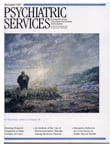A Beautiful Mind
This is a gripping book for the general public as well as for the mental health professional. It is the biography of John Nash, who in 1994 received the Nobel Prize in economics for his doctoral work—done several decades earlier, at age 21—on noncooperative game theory, the economics theory that currently dominates privatization, megamergers, big government, and international trade.
What makes the story of John Nash so very unusual is that this young MIT mathematician, after publishing several brilliant, breakthrough mathematical proofs much marveled at and envied, developed, at age 30, a malignant form of schizophrenia that put a virtual end to his career in mathematics. Having given the world of economics the Nash equilibrium, John Nash lost his own mental equilibrium, resigned his professorship, and spent his time deciphering the cryptic meanings of numbers and signs, trying to dispose of his American citizenship, writing letters that made no sense, and eluding malevolent forces whose voices drummed in his head.
After 35 years of partial insanity, John Nash, then approaching 70, went into remission and began doing mathematics again. Shortly thereafter, his admirers and intellectual debtors nominated him for the Nobel Prize.
Sylvia Nasar, economics correspondent for the New York Times, traces his story from his childhood in West Virginia through his graduate years at Princeton and his faculty years at MIT before his breakdown. She paints a picture of an ambitious, intuitive, arrogant, socially awkward mathematics whiz who develops intense crushes on young men but who winds up with two women and a son by each. Although the story is mainly about John Nash, it also describes his family, his friends, and his colleagues and rivals amid the competitive world of pure mathematics. We get to know the two women, Eleanor and Alicia, each admirable in her own way. We get to know the two sons, both named John, one growing up in foster homes and poverty, estranged from his father, and the other, much loved and attended, a promising mathematician and brilliant chess player who succumbs to schizophrenia at age 17.
We are also given a glimpse of the behind-the-scenes maneuvering that takes place at the Nobel committee level, how decisions are made and unmade, and how feverish the lobbying can be. Sylvia Nasar conducted more than a hundred interviews with those who knew John Nash intimately, she combed archives, and she sought out the writings of Robert Lowell, who was hospitalized at McLean Hospital during a period when John Nash was also a patient there. She read letters, postcards, and e-mail sent from John Nash to his mother and sister and to his colleagues. She talked with him personally.
A Beautiful Mind is an attempt to understand many imponderables. That spark of creativity—where did it come from? That sudden descent into delusion—what caused it? The gradual return to health—what permitted it? The graver, earlier form of illness in the second generation—what determines it? The connection between genius and madness—does it exist?
Dr. Seeman is Tapscott professor and chair of schizophrenia studies in the department of psychiatry at the University of Toronto in Ontario, Canada.



